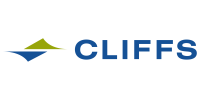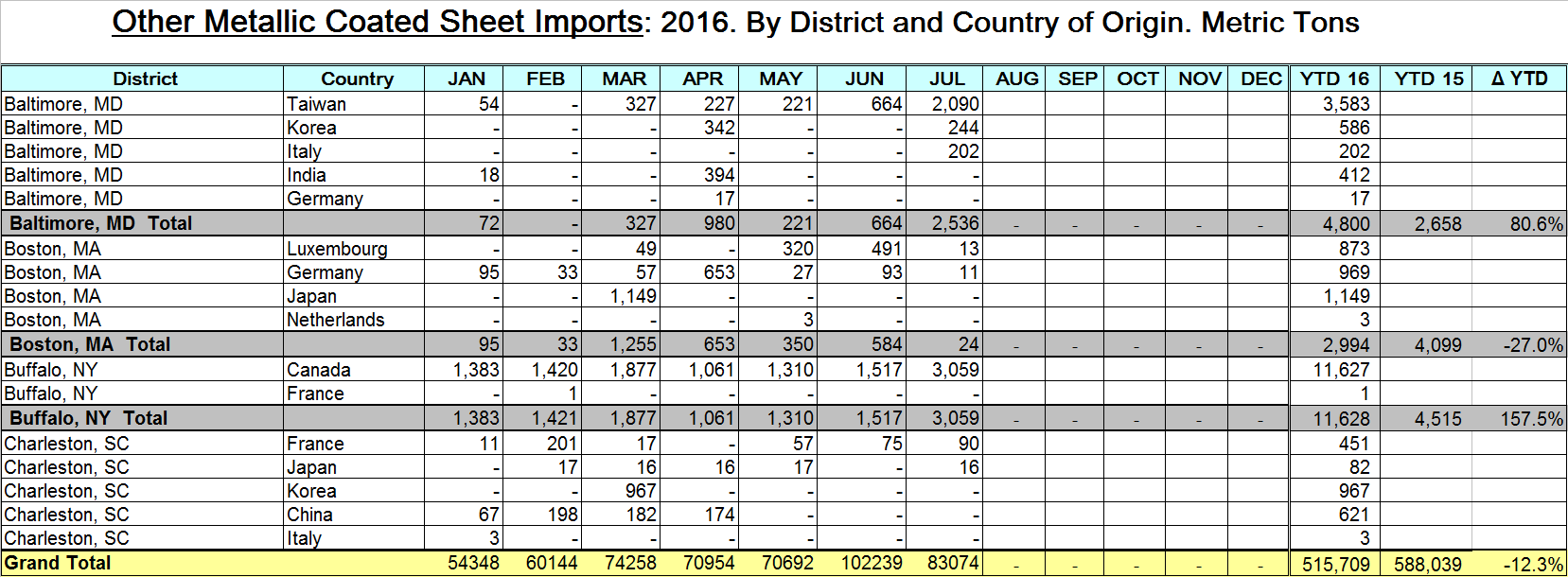Steel Products Prices North America

Analysis of Sheet Steel Imports by District of Entry and Source through July 2016
Written by Peter Wright
September 9, 2016
Steel Market Update is reintroducing our monthly analysis of foreign steel imports into the United States by product, port and country. This report will be available to our Premium level members shortly after the U.S. government releases the Final Census data for each month. The data was just released for the month of July, you can down the excel sheets for each product on the Imports by Port/Country page here.
The SMU monthly import analysis describes the total tonnage by product. It is intended to be a big picture commentary that describes how import volumes are changing and by implication what effect they are having on the macro market. It does not provide any regional information nor does it tell us the country of origin. Data in these monthly reports is in short tons.
![]() We believe that miss-information about regional import volumes is often used to influence purchase decisions. Our intent with this analysis is to describe in detail what is going on in a company’s immediate neighborhood and thus provide a negotiating advantage for our premium subscribers.
We believe that miss-information about regional import volumes is often used to influence purchase decisions. Our intent with this analysis is to describe in detail what is going on in a company’s immediate neighborhood and thus provide a negotiating advantage for our premium subscribers.
In future we will publish data on our web site reports that breaks down the tonnage of the four major sheet products into the port of entry and country of origin in metric tons. This data set is large therefore we will make no attempt to provide a commentary. Each readers interest will be different and he/she simply needs to select one of the four products then find the nearest port or ports of entry to see how much came into their region each month and where from. It is clear from these detailed reports that the growth of tonnage entering a particular district in many cases bears no relation to the change in volume at the national level.
Figure 1 is a small extract from the data sheet for other metallic coated products.
It describes the tonnage that has come in through Baltimore, Boston, Buffalo and Charleston and the grand total for all districts of entry. It shows where it came from, the YTD tonnage and the YTD change compared to 2015. The total volume of OMC into Baltimore in the 7 months through July was 4,800 tons, up 80 percent from YTD 2015. Taiwan accounted for most of the tonnage. The data on our web site spells this out for every port of entry around the country for hot rolled, cold rolled, HDG and other metallic coated which is mainly Galvalume.
The data in these detailed reports is compiled from tariff and trade data from the U.S. Department of Commerce and the U.S. International Trade Commission. Our other import reports are sourced from U.S. Department of Commerce, Enforcement and Compliance, otherwise known as the Steel Import Monitoring System. In the development of these reports by district and source country we have discovered that the SIMA data for HRC and CRC contains high alloy steel such as stainless and tool steel. These alloy steels are not included in in our detailed reports which results in a discrepancy between the two data sets for CRC in particular and for HRC to a lesser degree.

Peter Wright
Read more from Peter WrightLatest in Steel Products Prices North America

SMU Price Ranges: Sheet and plate steady ahead of Independence Day
Sheet and plate prices were little changed in the shortened week ahead of Independence Day, according to SMU’s latest check of the market.

Nucor maintains plate prices, opens August order book
Nucor aims to keep plate prices flat again with the opening of its August order book.

Nucor CSP remains level at $900/ton
Nucor maintained its weekly list price for hot-rolled (HR) coil this week, following two consecutive increases.

Cliffs raises prices, seeks $950/ton for July spot HR
Cleveland-Cliffs plans to increase prices for hot-rolled (HR) coil to $950 per short ton (st) with the opening of its July spot order book. The Cleveland-based steelmaker said the price hike was effective immediately in a letter to customers dated Monday.

HRC vs. prime scrap spread widens in June
The price spread between HRC and prime scrap widened in June.

